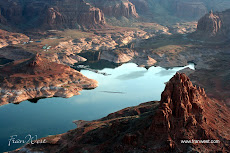Thursday, August 4, 2011
A Compact Compass Gives Confidence in the Canyonlands
A good magnetic compass in the pocket, hiking backpack or around the neck is always a great backup to have when out walking. I like to wear mine dangling around the neck because I always know where it is and it's easily accessible. Here's one to check out: Suunto M-3DL Compass.
Click on the ad for more information.
Product Description
Hailing from Suunto's M-Series, the M-3DL is a compact, premium-quality precision compass designed for accurate and convenient direction taking. The user-friendly compass features a large, liquid-filled capsule and an adjustable declination correction scale that guarantees a high level of accuracy. Another convenient feature is the serrated bezel ring, which is easy to turn even in cold conditions while wearing gloves. And thanks to the easy-to-read luminous markings and magnifying lens, the M-3DL is ideally suited to navigating in poor visibility. The compass even features a base plate with anti-slip rubber pads for stability and rounded edges for ergonomic comfort in the hand.
The M-3DL employs Suunto's two-zone system to help adventurers find their way anywhere in the northern hemisphere. Previously, most compasses functioned well in only one of five geographic zones. That's because the compasses were balanced differently based on the zone's inclination, i.e., the vertical intensity and direction of the Earth's magnetic field. However, as people began to travel more, it became clear that globe-hoppers needed compasses with a greater geographical range. Suunto's two-zone system, by contrast, considers only the northern and southern hemispheres. In practice, this means that a Suunto compass designed for the northern hemisphere--as the M-3DL is--will still work for a fair distance into the southern hemisphere and vice-versa. Suunto is one of only two compass manufacturers to offer two-zone compasses.
The M-3DL, which also features a jewel bearing and marking holes for drawing control points, measures 2.4 by 4.9 inches and weighs a mere 1.6 ounces. In addition, the compass carries a lifetime warranty.
Tuesday, August 2, 2011
Capitol Reef is Captivating, Really
Capitol Reef National Park, one of the Utah parks in the south, really is captivating. It's a long skinny national park accessible between Torrey and Hanksville. Or if you're doing a clockwise trip around the national parks like I did, it's between Bryce Canyon National Park to the west and Canyonlands National Park and Arches National Park to the east.
I love photographing different signs. The national parks, in particular, have a clear welcoming sign that lets you know that you're in for something spectacular. Photographing signs also indicates where the next photographs have been taken. It's also not a bad idea to photograph the sign when you leave a place (for obvious reasons).
The Visitor Center very fittingly blends in well with its surroundings. It's well worth a visit to pick up maps and information, look at the exhibits, watch a short video, buy souvenirs and use the rest rooms. The location is at the junction of the Scenic Drive and Route 24.
I really only had time to travel along the Scenic Drive and back and then continue east along the main road. However, the park really needs a couple of days to explore.
Looking at the photos, you can see that Capitol Reef National Park is one of those really rocky Utah parks. It's comprised of 378 square miles of towering landforms, canyons, mesas and folded rock layers and it's a photographer's Paradise (most of my photos of Utah are rocks, rocks and more rocks!). Stay tuned for more posts later.
Here's more information about Capitol Reef National Park.
Subscribe to:
Posts (Atom)







